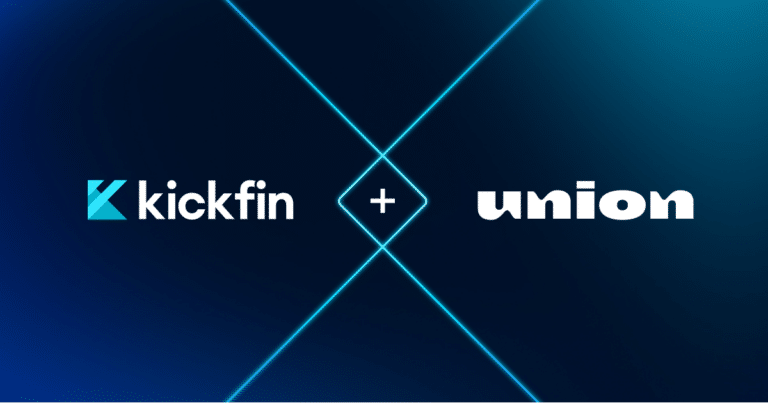In the hospitality industry, tips (or gratuities) aren’t icing on the cake: they’re often the reason employees can make a living wage. The process of splitting tips — i.e., tip pooling, tip sharing or tipping out — helps to ensure that everyone who contributes to a customer’s experience can reap the rewards of a job well done.
To truly benefit your team and business (without damaging your culture) tip pooling or tip sharing must be done fairly, transparently, and in accordance with current regulations.
Whether you’re in California or Connecticut, here’s an overview of how tip pooling (or tip sharing, or tip splitting) should work, plus some resources to make sure you’re in compliance with the laws in your own state.
Before we dive into various tip-out or tip pay-out methods, it’s important to understand some basic terms and stipulations around restaurant tips.
What is a tip?
A tip, or a gratuity, is a sum of money that a restaurant customer pays in addition to their check amount. It’s important to note that a tip or gratuity is not mandated. In the U.S., a tip is often expected, particularly at full-service restaurants — but it’s not required. Generally, a tip or gratuity is somewhere between 10-20% of the total check amount (before taxes and other fees). However, the tip amount is ultimately left to the discretion of the customer.
Who can receive tips?
Tips belong to employees, period. While restaurants can redistribute tips by way of a tip pool (more on that below), managers and employers cannot participate in tip pools. (With that being said, if a manager receives a tip directly from a customer, they are entitled to that money.)
There are some positions that are commonly tipped — like servers, bartenders, bellhops, valets — but the title isn’t what really matters. Your employees qualify as tipped employees if they “customarily and regularly” receive more than $30 in tips per month.
Non-tipped employees are generally back-of-house staff, like chefs, line cooks, dishwashers and janitors. These people contribute to a guest’s experience, but they don’t actually interface with the guests and therefore don’t have the opportunity to receive a tip.
What’s the tip credit?
Employers in the hospitality industry can legally pay their employees less than minimum wage if their employees’ tips make up the difference. When employers do this, it’s called taking a tip credit, because they’re crediting their employees’ tips toward an employer obligation to pay minimum wage. (Keep in mind: not all states allow tip credits. To check out minimum wage rules for your state, go here.)
Tip Pooling for Restaurants
Now let’s take a look at the ins and outs of tip pooling: what it is, how it works, and different tip pooling structures that your restaurant might consider.
What is tip pooling?
Tip pooling is a practice in the hospitality industry where tipped employees contribute the tips they’ve earned into a pool at the end of a shift. That pool is then divided (often equally, but not always) among a designated group of employees. Simply put, all tips received during a shift are pooled and then redistributed among employees.
When restaurants require tip pooling, they’re subject to certain regulations at the federal level, as well as state-level regulations that vary depending on where your restaurant is located. Illegal tip pools have led to multimillion-dollar lawsuits for restaurants, so it’s important to ensure your restaurant is operating within the letter and spirit of the law before instituting a tip pool.
What is tip sharing?
People often use the terms tip pooling and tip sharing interchangeably. And in reality, there’s no real legal definition for tip sharing. From a legal standpoint, we typically see the term “tip pooling” used as a broad, high-level category for the process of contributing any amount of tips to a pool and redistributing them (including what you might consider tip sharing). Learn more about the difference between tip pooling and tip sharing.
However, while tip pooling is often (but not always) based on an equal distribution of pooled tips, tip sharing is based on percentages that vary based on position. For example, servers may keep 60% of their tips and “share” the other 40% with other employees, including FOH staff like bussers and hostesses, and/or BOH staff like dishwashers and line cooks.
What is tipping out?
Tipping out is essentially the same as tip sharing. In the explanation above, the “sharing” part is actually tipping out. So a server would keep their share or percentage of the tip pool, then “tip out” bussers, hostesses, etc. based on pre-set percentages.
What are the current tip pooling laws for 2022?
The laws around tip pooling or tip sharing (and tip payments in general) are somewhat complex. Here’s a quick rundown of tip pooling laws and regulations.
- Who can participate in a tip pool? Managers, supervisors and employers absolutely cannot participate in a tip pool, period. (If you have managers or supervisors that sometimes perform duties of a tipped employee, you can learn more about that here.)
In 2018, the Department of Labor issued a rule change that now allows BOH employees to participate in a tip pool, but only in states where there isn’t a tip credit — so, primarily the West Coast. - Federal vs state tip pooling laws.: There are both federal and state regulations around tip pools. It’s critical to understand both the federal laws and the state laws that apply to your business. Keep in mind: if you operate multiple sites, each site is governed by the regulations where it is located. (In other words, it doesn’t matter where you’re headquartered.)
- Tip pooling lawsuits. There have been multimillion dollar lawsuits due to illegal tip pools. Generally, tip pool lawsuits are the result of a) Management or management employees taking part in the tip pool, or b) Employees being unclear about the rules of the tip pool (lack of transparency and communication).
- Changes to tipping regulations. Laws continue to evolve as they relate to minimum wage for hospitality workers, the tip credit, and more. Many of these changes are tied to administration changes. (For example: the 80/20 rule has shifted under Obama, Trump, and now Biden.) Changes to these laws can impact your tip pooling policies, so it’s important to stay up-to-date.
Restaurant tip pool policies and formulas
In order to create a tip pool for your restaurant, you’ll need to answer these two questions.
How is the tip pool being created or calculated? In other words, what’s going into the pool? A few common options:
- Require all tips to go into the tip pool, then redistribute.
- Require a percentage of a server’s total sales to go into the pool. (E.g., a server’s sales for their shift total $500; the server might put 2% of his sales, or $10, into the pool.)
- Servers keep a set percentage of their tips, then contribute the remainder to a pool.
Who is participating in the tip pool? We’ll say it again for the people in the back: Managers, supervisors and employers cannot participate in a tip pool. But you’ll need to decide which employees you want to benefit from the tip pool. That could be:
- Only servers
- Servers and bartenders
- FOH staff
- FOH and BOH staff
Sample tip sharing policies and methods
Below are a few sample tip pooling policies. Of course, before instituting a tip pool policy, you’ll need to make sure it’s in accordance with both federal regulations and the state regulations that govern your restaurant locations.
- Basic tip pool. All tips are pooled, then evenly distributed among participating employees. This happens more frequently with QSR and fast casual restaurants — i.e., the type of establishment that might have a tip jar.
- Set percentages. Generally, for percent-based tip-outs, servers keep a majority percentage of their tips, then contribute the remainder to a pool. An employee’s role or position then determines the amount they receive from the pool.
Real world example: Servers keep 70% of their tips and contribute 30% to a pool. Bartenders might get 50% of the pool, hostesses get 20%, bussers get 10%, dishwashers get 10%, and so on.
- Points system. Employees are assigned points based on their role, and those points determine the percentage of the tip pool they receive.
Real world example: Let’s say servers get 15 points, hostesses get 5 points, and bussers get 2 points. You’d want to determine the total points for each shift.
- 4 servers = 60 points
- 2 hostesses = 10 points
- 1 busser = 2 points
So, total points = 72.
If total tips earned in one shift is $792, the value of a point is (792 / 72), or $11. So each server would get $165 (15 x $11), each hostess would get $55, and each busser would get $22.
- Hours worked. Tip pool amount is divided by total hours worked. That number is then multiplied by the hours each employee worked to determine what they’re owed.
Real world example: 4 servers worked a total of 25 hours. The tip pool totals $450. For every hour worked, servers earn $18.
- Server A worked 4 hours, gets $72
- Server B worked 7 hours, gets $126
- Server C worked 8 hours, gets $144
- Server D worked 6 hours, gets $108
Learn more about calculating shared and pooled tips here.
A few other notes on tip policies
Employer tip “deductions”
As stated above: tips belong to employees, not employers. However, when your employees are tipped via credit card, federal law generally allows restaurants to deduct a proportionate percentage of the credit card processing fee from the tip. (That is, if you have to pay a 4% credit card processing fee, you can legally deduct 4% from your employees’ tips. Keep in mind: this is another case where federal law may permit this policy, but states may have stricter rules.)
Service chargers, surcharges and auto-gratuities
Service charges and surcharges aren’t gratuities. If any of those charges go toward employees, they must be treated as wages, not tips. That goes for auto-gratuities, as it’s a mandated charge and not at the discretion of the customer. For more information on these charges, check out our post with labor and employment attorney Beth Schroeder.
What is the best tip-out policy for your restaurant?
Tip pooling can be a sensitive subject. Many restaurateurs have the best of intentions when they decide to establish a tip pool, but it’s not always done in a way that benefits the team.
While everyone plays a role in a guest’s experience, servers typically put in the face time and (arguably) can make or break the tip by managing the experience — i.e., establishing rapport, avoiding mistakes, doing damage control when the kitchen’s backed up or runs out of salmon. Servers and other tipped employees may be less excited about sharing tips with back-of-house staff.
And, unfortunately, there’s a level of distrust that your employees may have around tip pools, as some restaurateurs and employees have gamed or abused the system for their own benefit. While they’re certainly in the minority, they’ve given tip pooling a bad rap.
On the other hand, there are some pros to tip pooling and tip sharing with non-tipped employees. It keeps anyone from having a truly terrible night in terms of tips earned. Also: Your back-of-house staff certainly contributes to the experience a guest has — and they’re working just as hard as their tipped co-workers — but they don’t have the earning potential that comes with being a tipped employee.
If you’re establishing a tip pool for the first time, after ensuring that you’re 100% compliant with state and federal laws, think through the policies and specific percentages that will work best for your restaurant.
Then, focus on transparency: clearly communicate your objectives and policies. Not only is it required by law that you provide oral or written notice, but it’s also important from a culture and trust perspective. If employees understand the thought and logic behind your decisions, they’ll feel confident that you care about the financial well-being of every person on your team.






